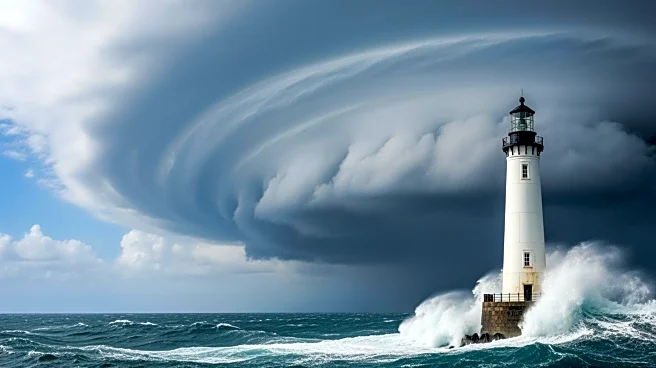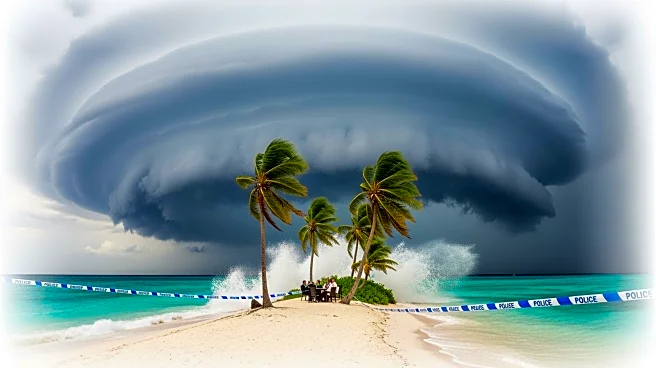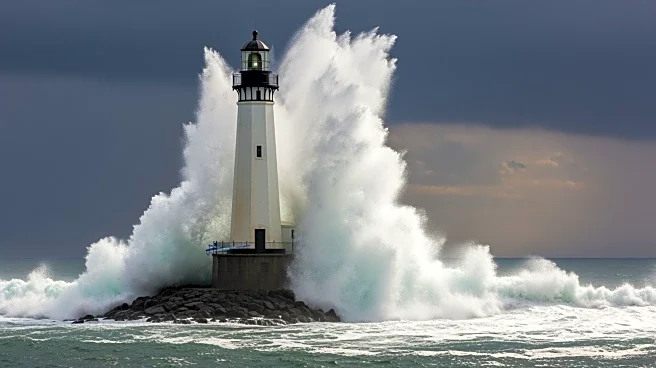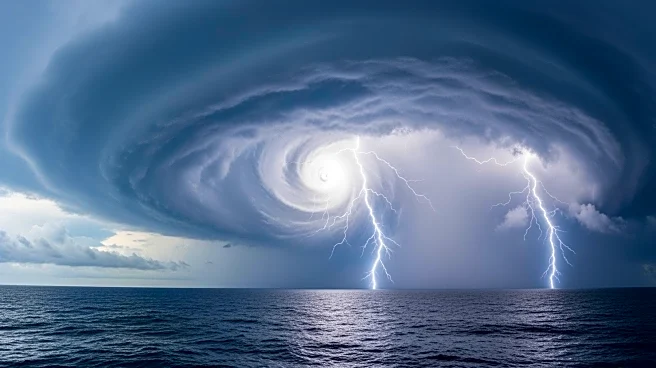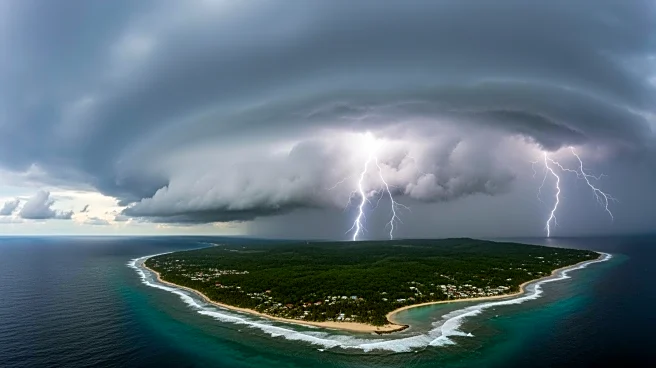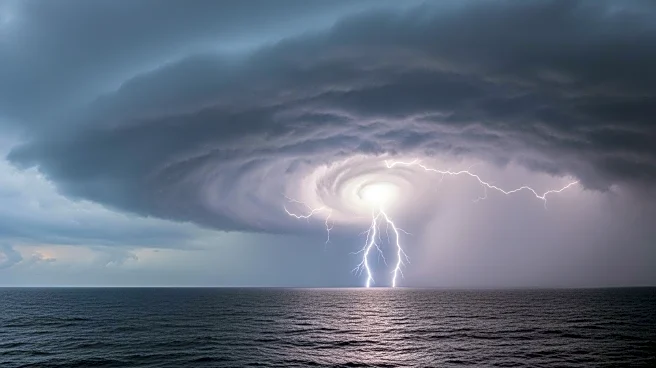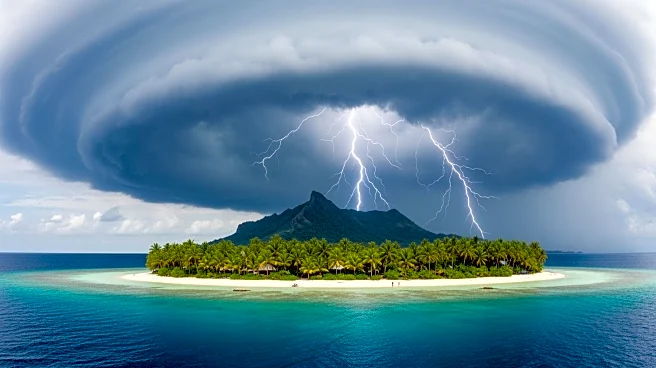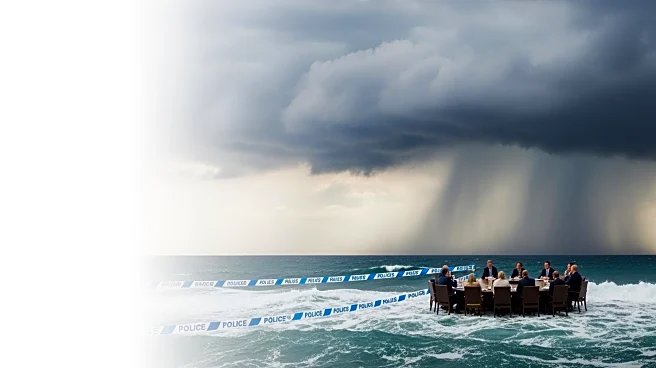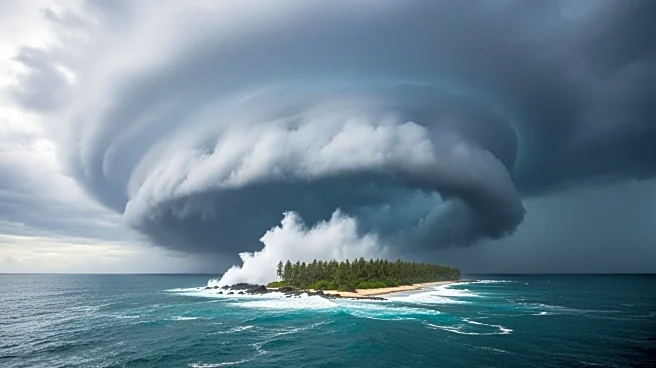What's Happening?
Hurricane Melissa has intensified into a Category 4 storm, with maximum sustained winds reaching 140 mph. The hurricane is moving slowly at 5 mph, posing a significant threat to Jamaica and other Caribbean
islands. The National Hurricane Center (NHC) has issued warnings of catastrophic and life-threatening conditions, including flash flooding, landslides, and storm surges up to 11 feet. The storm is expected to bring heavy rainfall and damaging winds to Jamaica from Sunday through Tuesday, with the eye of the storm reaching the island late Monday or early Tuesday. Authorities have closed airports and seaports, and the Jamaican government has activated its emergency operations center in preparation for the storm.
Why It's Important?
The intensification of Hurricane Melissa poses a severe threat to the Caribbean region, particularly Jamaica, which is bracing for potentially unprecedented damage. The storm's slow movement increases the risk of prolonged exposure to its destructive forces, including extensive infrastructural damage and long-duration power and communication outages. The potential for life-threatening conditions could lead to significant humanitarian challenges, as communities may become isolated due to flooding and landslides. The economic impact could be substantial, affecting tourism, agriculture, and infrastructure in the region.
What's Next?
As Hurricane Melissa approaches, authorities in Jamaica and neighboring islands are on high alert. Emergency shelters have been set up, and residents are urged to seek safe shelter immediately. The NHC predicts that the storm could strengthen further into a Category 5 hurricane, increasing the urgency of preparations. The storm is expected to continue its path towards southeastern Cuba and the Bahamas, where similar warnings have been issued. The international community may need to prepare for potential humanitarian aid and disaster relief efforts in the aftermath of the storm.
Beyond the Headlines
The intensification of Hurricane Melissa highlights the increasing frequency and severity of extreme weather events in the Caribbean, potentially linked to broader climate change trends. The region's vulnerability to such storms underscores the need for improved infrastructure resilience and disaster preparedness. Long-term strategies may be required to mitigate the impact of future hurricanes, including investment in sustainable development and climate adaptation measures.
